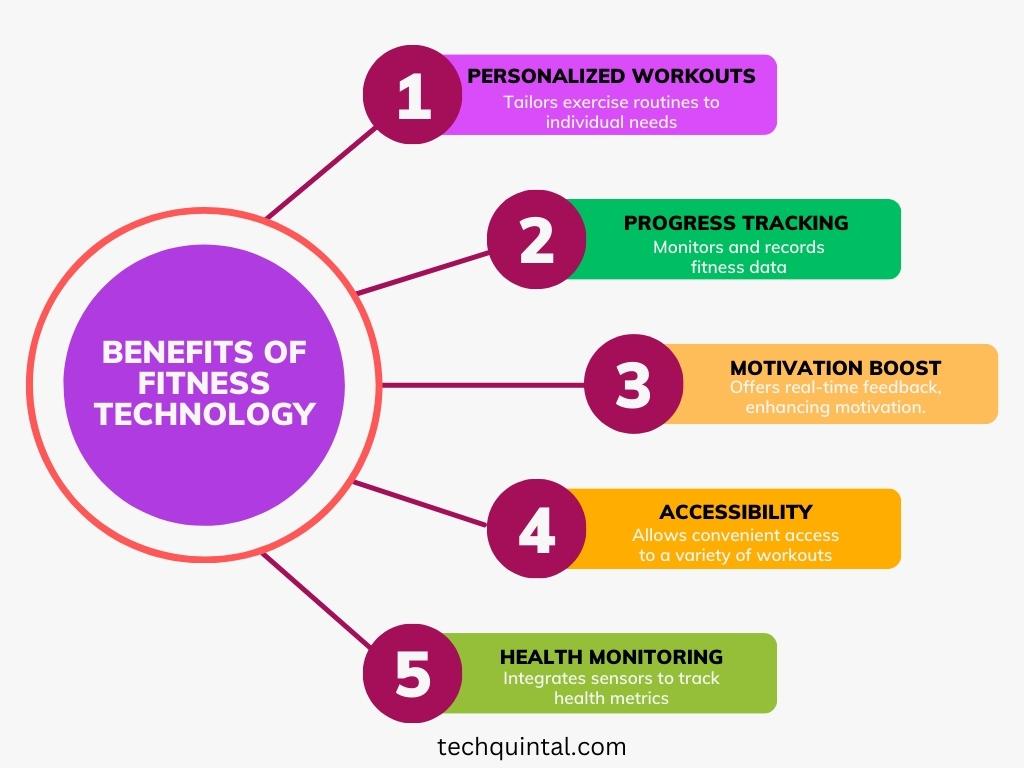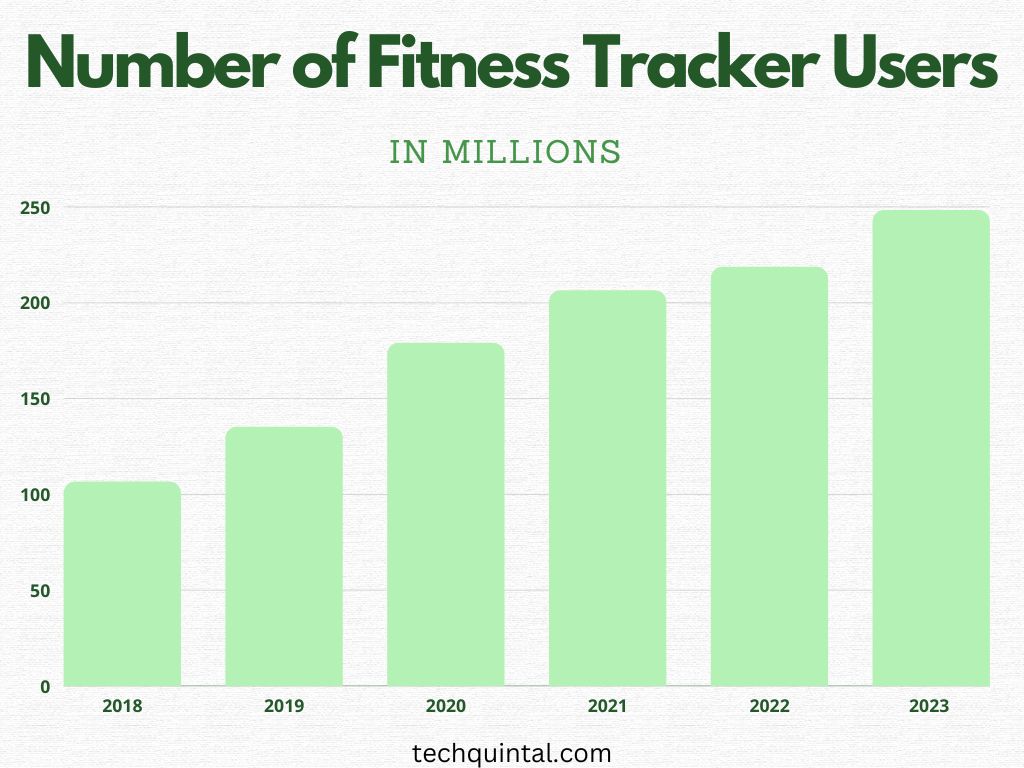
When was the last time you took the stairs instead of an elevator? If you can hardly remember, now’s the right time to self-reflect and analyze the impact passivity has on your health. Technology made our life easier, eventually reducing physical hardships, but also clearly has detrimental health effects. Studies have shown that physical inactivity is the leading cause of a plethora of health problems. Several researchers have found a link between technology and lack of physical activity. But is technology only inimical to our health, or does it have value to add? You’ll find out in our technology vs fitness study.
What is Technology?
Using scientific knowledge to develop practical tools to make lives better is known as technology. It is the collection of systems and tools to solve problems and enhance humans’ capabilities. No matter where you are living, you cannot spend a day without using the tech around you.
From your smartphones to vehicles, everything in your surroundings is made of tech. And, it is growing every day. The world of tech is evolving and innovating every day.
Technology is not just about solving tasks faster. It is also about giving humans a new perspective on seeing the future. It makes our lives simpler and easier. With technology impacting almost every sector of our lives, it is safe to say technology is not just about simplifying our lives anymore, but a necessity to live.
What is Fitness?
We are all familiar with the word Fitness. Fitness is our physical health and well-being that allows us to perform daily activities in an efficient manner. When someone is healthy and not struggling to do average physical activities, we call them Fit. And when someone is lazy and gets tired easily, we say they lack fitness. To achieve a good fitness, one must exercise regularly and eat healthy.
But it is not just about having a good body shape. Fitness is a term that contains good mental health, endurance, flexibility, and overall vitality. To achieve good fitness, you have to work hard and have your own personal journey.
It will involve failures, procrastination, and weather, but you have to face everything with determination. To achieve your goals, you must cross the mental barriers that you will face while working out.
The role of technology in fitness
The integration of technology in fitness results in positive outcomes. The results range from weight loss to building a healthy lifestyle. It also provides access to near-infinite fitness-related resources. You can find social media accounts encouraging people to develop healthy habits.
Not only that, technology is used to keep the motivation going. People often use earphone technology while running, jogging, and exercising. Plus, there are fitness podcasts channels, which inspire individuals to become consistent and prioritize their health.
The part technology plays in the fitness space is not limited to inspiring people. It also provides tools to measure and achieve fitness goals. For instance, wearable technology keeps track of physical activities, food intake, sleep patterns, oxygen levels, heart rate, and even time, pace, number of steps, and more.
Then, that data is stored and processed on fitness applications or software. This helps users understand the progress and draw a clear picture to guide their future actions. Moreover, it connects individuals to the online fitness community, willing to help when they face obstacles.
The evolution of the fitness industry
Since the beginning of time, people realized that they needed to remain fit as their survival depended on it. That’s how you will see the inculcation of physical activity into the daily routine over the centuries. We live in a modern time, where we can leverage technology to stay in shape.
Actually, this became crucial, because we no longer need to worry about moving for survival. Considering we are not primarily concerned with it, our food intake has increased while there is a reduction in the burning of energy (calories). Therefore, issues like obesity and diabetes have emerged and continue to be a threat.
Over the decades, the fitness industry has witnessed the introduction of various equipment and techniques to improve the results. From gym studios to virtual gyms, we are moving at a quick pace today. Concepts like personal and functional training are becoming mainstream.
The distinguishing element technology brings to the fitness industry is personalization, which improves exercise efficiency and eliminates potential injury. Now that you are aware of the significance of both technology and fitness, let us look at how they compete and compare.
Technology vs fitness: Benefits and drawbacks
Whenever technology is in the picture in connection to fitness, people find it hard to pick sides. Some argue that it has impeded our physical activity, while others state it has facilitated it. The last thing you would want is to get lost in the cloud of confusion. But do not worry—we have described the relationship between technology and fitness in a way convenient for you. Let’s get started.
Technology hindering physical activity
The major concern parents have is that their kids spend excess time in front of a screen, leading to physical passivity. Their worries are reasonable as this is also becoming a common issue among adults.
Sedentary time has been linked to various health concerns including obesity, heart attack, cancer, and in the worst case, slow but eventual death. Surveys show the time we spend using our devices is increasing with no signs of slowing down, irrespective of creating awareness about health effects.
During the recent pandemic, this problem escalated. Although we are getting back to normal, technology has become an integral part of our lives. While we cannot ignore the benefits it has to offer, we need to focus on dealing with the damaging effects.
Adults need to make conscious efforts to reduce screen time outside working hours. Similarly, time in front of a screen for kids should be limited to essential activities. Moreover, we should encourage both groups to spend time on physical activities.
Technology promoting physical activity
If the section above convinced you, be ready to have your opinions challenged. Firstly, we live in a technological era, so the thoughts about limiting or eliminating technology must be discarded. Secondly, technology has changed the way we perceive fitness. We have wearable devices aiding personalized training, which include workout progress tracking.
During the pandemic, the gyms were closed or functioned with limited occupancy. This forced people to move toward digital or home training, and both remained prevalent afterward.
During the COVID-19 pandemic, fitness enthusiasts sought solace in fitness technology. It includes virtual classes, fitness and wellness applications, and virtual reality (VR). Virtual or online fitness classes enable enthusiasts to learn from coaches in real-time, at a location they choose. These help them see optimum results, even at home.
Fitness and wellness applications keep track of the overall health of users. Along with providing workout aid, they address other health factors including mental, social, and intellectual. Virtual reality creates an immersive virtual workout environment for the users. The fun element brought by VR is a game-changer. People perceive the experience as playing games when in essence, they are working out.
How to Use Technology To Get Fit

It is not the best of ideas to put technology against each other. A good way to use technology is to promote your health and fitness. There are a lot of technological products available in the market that you can use to keep track of your daily activities and burn fat. Let us see how technology can help you achieve your fitness goals:
- Fitness Trackers: Fitness trackers are some of the most popular fitness gadgets available these days. They help you keep track of how much calories you have consumed and burned, and how much you have moved. When you set a personal goal, having a fitness tracker with you helps you stay organized and disciplined.

- Workout Apps: If you are a newbie and do not know much about how to get started with workouts, these workout apps can help you a lot. Big fitness companies like Adidas and Nike have their own fitness apps where plenty of workout options are available for all types of individuals.
- Sleep Trackers: The essence of sleep is often neglected by a lot of people. But without proper sleep, it is not possible to achieve health goals. Fitness trackers allow you to track your sleep and make sure you get proper rest to rock your workout the next day.
Here is a table showing different types of fitness technologies and their features:
| Fitness Tech | Key Features | Benefits |
|---|---|---|
| Fitness Trackers | Calorie counter, activity monitor, sleep tracker | Personalized insights, goal tracking, motivation |
| Workout Apps | Custom workout plans, video tutorials, progress tracker | Accessibility, variety, guidance |
| Smart Scales | Weight, BMI, body fat percentage tracking | Comprehensive health insights, progress tracking |
| Virtual Reality Fitness | Immersive workouts, interactive environments | Engaging, fun, enhanced exercise experience |
Final thoughts about technology vs fitness
Irrespective of the type of effects technology is having on a person’s fitness, it isn’t going anywhere. Instead, it comes down to the individuals to make the sensible choice to prioritize their overall health and well-being and use technology as an instrument.
In this analysis, we explored the importance of fitness and how technology is leveraged to let us stay healthy. We also examined how their relationship works in our favor. Finally, we can conclude more technology-powered innovations that will transform the fitness industry are on the way.